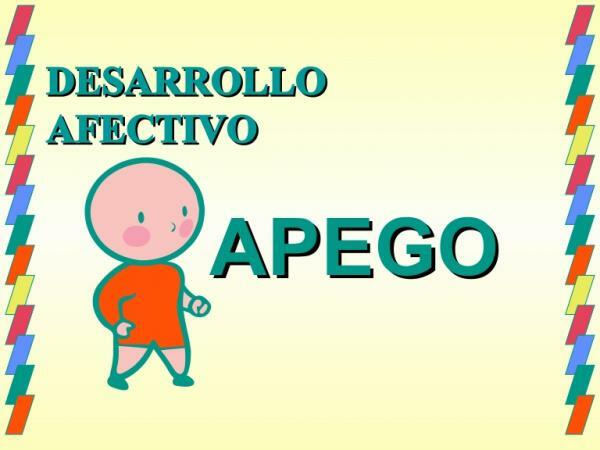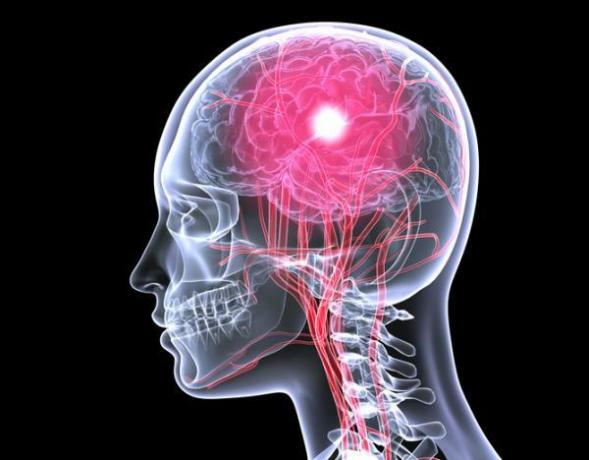
Attachment It supposes the strongest affective "bond" that human beings feel towards other peers, producing pleasure when interactions are carried out and seeking the closeness of the person in moments of anxiety and insecurity. The establishment of the affective bond takes place in four stages. In human beings the bond of attachment takes a few months to appear as it involves a complex mix of behaviors between the mother and her child and takes on a wide variety of forms.
Preattachment phase
0 to 6 first weeks The child accepts any human being who provides comfort. Genetically determined reflexes that have great survival value (smile, cry.) Respond to stimuli from others They try to provoke physical contact on many occasions. A very rudimentary recognition of the mother appears. They prefer the voice of this wing of any other adult even though they still do not show a proper attachment bond.
Attachment formation phase
6 to 8 months Anxiety occurs when the child is separated from humans, but not especially in the absence of the mother. The child guides her behavior and responds to her mother in a clearer way than she had done before. He follows her mother with his gaze and is angered by the separation from humans (not her mother.
Attachment phase proper
6/8 to 18/24 months. Very strong affective bond with the mother. Anger and anxiety when she disappears At 8 months she may reject physical contact with others. He only wants the mother's arms. Most of the children's actions are aimed at attracting the mother's attention and a greater presence of her.
Reciprocal relationship formation
18/24 months onwards. The child understands that the mother's absence is not final and manages to calm her anxiety. Appearance of language and mental representation of the mother, which allows him to predict her return. In this phase, children whose mother explains why she left and the approximate time that she will be absent tend to cry less than children who are not given any explanation From the age of 3, he deploys strategies to control the interaction with her mother "forcing" her to agree (at certain times) on the entrances and exits of the home.
The end of these phases supposes a solid affective bond between both parties that does not need physical contact or a permanent search on the part of the child, since he feels the security that her mother will respond in the moments in which the she needs.
It is the most used technique to analyze the quality of mother-child attachment in the first 2 years of life. It consists of 8 episodes: Separations and maternal encounters with the existence of a strange person and the result:
- Safe, avoidant and resistant identification of these three.
- A room is added: Disorganized / Disoriented from Main and Solomon.
Secure attachment: 2/3 (The remaining ones become insecure attachments like the following). They seek contact with the mother and reduce crying when she returns to the room. The cry is due to the preference they have for the mother before the stranger.
Avoidant Attachment: 20% (shows indifference) They do not show anger or anxiety when the mother leaves the room, but when they are alone. They seem to react in the same way to their mother as to the stranger. They approach without any hurry to greet her and it does not provoke any special reaction of joy.
Resistant Attachment: 10 and 20% (the need not to lose it causes them anger (they hit) and avoidance when it arrives. Before the mother leaves the room, they insistently seek her proximity. When she returns, they are angry, indifferent and even hit and hide from her. Many of them continue to cry and it is quite difficult for the mother to comfort them.
Disorganized / disoriented attachment: 5% (insecurity with contradictory behaviors - disorganization-) It seems to reflect a great insecurity in their bond with the mother. When he returns to the room, the children show contradictory behaviors that involve disorganization.
They do not usually look at the mother when they are picked up and maintain a stunned facial expression. Some cry after calming down and they show cold and distant. Cultural guidelines in the social, cognitive and emotional development of the child are of great importance. The above data are from samples of American children, in other cultures the data changes, this is due to cultural patterns of parenting:
- German - secure attachment 35%
- Japan - highlights resistant attachment
- Americans - safe 75%
This article is merely informative, in Psychology-Online we do not have the power to make a diagnosis or recommend a treatment. We invite you to go to a psychologist to treat your particular case.


